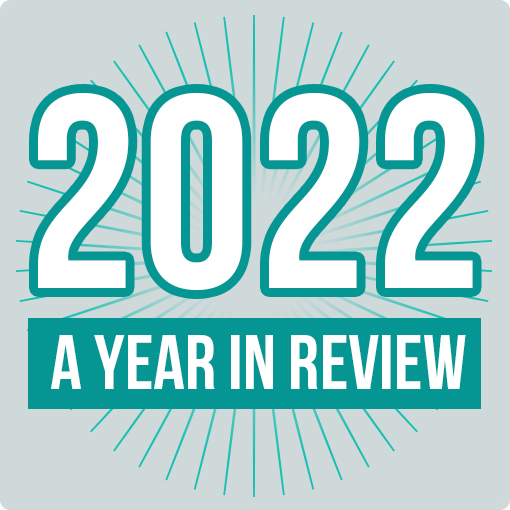I have a friend who has been going through a rough patch these last few months. Nothing financial, nothing tragic, just a general and overriding feeling of not being the happy type of guy he once was. Fortunately, by sharing this change with a few close friends, he found himself referred to an elderly, grey-haired guy at a beachside residence just out of Auckland.
Anyway, last week, over a few beers, my mate shared with me a recent insight the “greyer one” had proffered during his latest session. It would seem life comes with the biggest illusion of them all –namely the belief that we can affect some control over the experiences that come our way. So our health changes, with little regard for our plans; family members do what they want; and then, for those in business, there’s more lack of control than many of us are willing to accept.
But it’s not all bad news. Well, not totally. You see, the grey-haired man from the sea told my mate that all is not totally lost – there was one thing he could control and that was the way he reacted to everything that came his way. Now this person is a bit of a control freak anyway, so being told this news didn’t go down too well. But after some solid debating between himself and his aged advisor he gradually accepted the logic supporting it. And once he had, he admitted to feeling that he had moved one step further away from where he was and, consequently, one step closer to where he wanted to get back to.
All this is good news for him but not so good news for those of us tasked with managing a business. Knowing that we will never really have complete control over our operation is not something most of us want to accept. The appeal of achieving this state of total control sounds so inviting. Just imagine what it would be like. Revenue lines would climb upwards, perfectly mirroring the inclines of our budget graphs, staff would do exactly as their job description said they should and, last but not least, customers would send us a steady stream of the exact type of work we wrote about receiving 12 months prior in the marketing section of our business plans.
But of course it doesn’t work like this. It could be said that all these documents, when viewed in the wrong light, just support the fallacy that they can on their own magically control the business. The true reality is that all they represent are guide posts to help us steer our resources in the correct direction to help us better manage the uncontrolled nature of business. But they are not alone. There are other tactics we can employ to help us along the way.
It would be fair to say that marketing a business contains more ‘un-controllable’ aspects than most. Changing markets and fickle customer needs are just two big problems that should make only the very optimistic among us (some would say foolhardy) think they had complete control over their marketing outcomes. Nevertheless, there is a marketing task that, once completed, will help you capture a smidgen more control over the marketing outcomes you desire, and that’s running an active email marketing strategy.
From my 12 years’ experience in online marketing, I can confidently state that the vast majority of businesses would benefit from adding email marketing to their communications plans. However, of the prospects that come our way, it’s the minority that has something underway. And, I am sorry to say, that when I look through the list of our customers I only see a few who are actively using email in any part of their business.
So what’s wrong?
Well, to help me answer that big question I’ll call on an experience I had only the other week. I was meeting with a business owner who was an email marketing non-practitioner. Over coffee, she was doing a very good job of recounting each and every reason why she hadn’t begun email marketing – even after I had told her to do so a few months prior. Her list was a comprehensive one so I thought I would work through them here – with my answers included – just in case your situation is similar to hers (yes, Rebecca, John, Ray, Claire, Chris, Joanne and Sneha – this part is for you).
To start, she hit with me with the classic, “I don’t know what to write.” She had a consulting business so I told her to take a deep breath, calm down and write some simple stories of the work she had done – protecting people’s privacy along the way. Nothing too involved, nothing too complicated and probably less than 1000 words to start with. She could then finish this with either an offer or some call to action at the end to wrap things up. Short, simple and something that shouldn’t take her days to produce.
Next up I had, “But I don’t know when to send it.” I told her to keep clear of Monday at 9:00am and Friday at 4:30pm and between these to pick a time that best suited her. And yes, when she started out her list would probably be so small that she could possibly hand deliver each edition. But I told her not to worry about this, just to focus on getting that first edition out and about.
“But what should it look like? It needs to look professional.” Well yes, but it doesn’t need to be a work of art either. For instance, when I first started my own printed newsletter I bravely asked for feedback from a few close by clients and was told by one that it reminded him of something his local PTA would send him. Ouch!! For the next edition, I had our designer Ben take control of the look and layout and things improved markedly. But at least I was underway.
I also mentioned to her not to worry about the software she may need to make it all happen. There are more email marketing tools out there now for a list of her size than she would ever hope to imagine. And, fortunately, these tools don’t need a tech guru to drive them for low send volumes and so there was no need to worry about the costs – they are very affordable. Using an existing template with her logo and the finished content shouldn’t cause too much of a headache. It may be a bit minimalist in style but it would look OK to get going with.
“But who should I send it to?” My very short answer – anyone who has given you permission to. If you want to be really clever you could have two different sends, one for your customers and the other for your prospects. But please don’t let clever get in the way of you sending something out.
Take a leaf out of Google’s book and give yourself permission to put the development of your own email marketing strategy into a Beta stage of development. Google’s email client, Gmail, was in Beta for five years and now has over 193 million users monthly. Now personally, I think that five years is a bit long for most but do allow yourself at least the first year to be a work in progress. Try not to be too hard on yourself with those first few editions. Yes, you will look back and possibly cringe but at least you will be able to look back.
And while at this stage you can capitalize on your freshly learned insights by optimizing your efforts further. For example, you could improve your subscription rates – say, by asking more people to join and / or offering more benefits for membership. Or you could improve your production methods, which might include you scheduling one morning a month to sit down and write the darn thing in one go. Maybe use a small notebook (either electronic or physical) during the month to collect items of interest to make the production process even faster (my Evernote account does this for me).
All going well, after a few editions you will start to experience some positive changes to balance out all the extra work you’ve put in. Perhaps a client who hasn’t called for a while may do so after being prompted by reading a recent article. Or it could be that a prospect decides to buy sooner than you would expect – again because they have read and liked what you recently wrote. And perhaps even you will start to look at your business and the solutions you provide in a completely different light all because you have to write about it each month.
When you boil it all down to the underlying basics, email marketing is really just an easy way for you to communicate via email with your customers and prospects. It’s nothing more. And starting a short conversation with them each month, every month, on a subject that interests both you and them is quite handy, and a smart thing to control.
So once that first edition is out and about just do two more things. First – get a coffee, sit back and give yourself a “pat on the back” for a job well done. And secondly, send me a copy to have a look at – don’t worry I’ll be gentle – the fact that you have reached this first edition milestone is the real achievement.


